
The Reign of Terror was a period of the French Revolution when, following the creation of the First Republic, a series of massacres and numerous public executions took place in response to revolutionary fervour, anticlerical sentiment, and accusations of treason by the Committee of Public Safety.

The Committee of Public Safety was a committee of the National Convention which formed the provisional government and war cabinet during the Reign of Terror, a violent phase of the French Revolution. Supplementing the Committee of General Defence, created early January 1793, the Committee of Public Safety was created on 6 April 1793 by the National Convention. It was charged with protecting the new republic against its foreign and domestic enemies, fighting the First Coalition and the Vendée revolt. As a wartime measure, the committee was given broad supervisory and administrative powers over the armed forces, judiciary and legislature, as well as the executive bodies and ministers of the convention.

The Directory was the governing five-member committee in the French First Republic from 26 October 1795 until 10 November 1799, when it was overthrown by Napoleon Bonaparte in the Coup of 18 Brumaire and replaced by the Consulate. Directoire is the name of the final four years of the French Revolution. Mainstream historiography also uses the term in reference to the period from the dissolution of the National Convention on 26 October 1795 to Napoleon's coup d'état.

The following is a timeline of the French Revolution.

The National Convention was the constituent assembly of the Kingdom of France for one day and the French First Republic for its first three years during the French Revolution, following the two-year National Constituent Assembly and the one-year Legislative Assembly. Created after the great insurrection of 10 August 1792, it was the first French government organized as a republic, abandoning the monarchy altogether. The Convention sat as a single-chamber assembly from 20 September 1792 to 26 October 1795.

The sans-culottes were the common people of the lower classes in late 18th-century France, a great many of whom became radical and militant partisans of the French Revolution in response to their poor quality of life under the Ancien Régime. The word sans-culotte, which is opposed to "aristocrat", seems to have been used for the first time on 28 February 1791 by Jean-Bernard Gauthier de Murnan in a derogatory sense, speaking about a "sans-culottes army". The word came into vogue during the demonstration of 20 June 1792.

Jacques-Nicolas Billaud-Varenne, also known as Jean Nicolas or by his nicknames, the Righteous Patriot or the Tiger, was a French lawyer and a major figure in the French Revolution. A close associate of Georges Danton and Maximilien Robespierre, he was one of the most militant members of the Committee of Public Safety, and is often considered a key architect of the Reign of Terror.

Jean-Lambert Tallien was a French politician of the revolutionary period. Though initially an active agent of the Reign of Terror, he eventually clashed with its leader, Maximilien Robespierre, and is best known as one of the key figures of the Thermidorian Reaction that led to the fall of Robespierre and the end of the Terror.

Philippe-Antoine Merlin, known as Merlin de Douai was a French politician and lawyer.
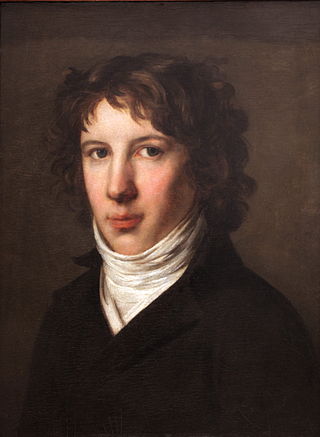
Louis Antoine Léon de Saint-Just, sometimes nicknamed the Archangel of Terror, was a French revolutionary, political philosopher, member and president of the French National Convention, a Jacobin club leader, and a major figure of the French Revolution. He was a close friend of Maximilien Robespierre and served as his most trusted ally during the period of Jacobin rule (1793–94) in the First French Republic. Saint-Just worked as a legislator and a military commissar, but he achieved a lasting reputation as the face of the Reign of Terror. He publicly delivered the condemnatory reports that emanated from the Committee of Public Safety and defended the use of violence against opponents of the government. He contributed to the arrests of some of the most famous figures of the Revolution, many of whom ended up at the guillotine.
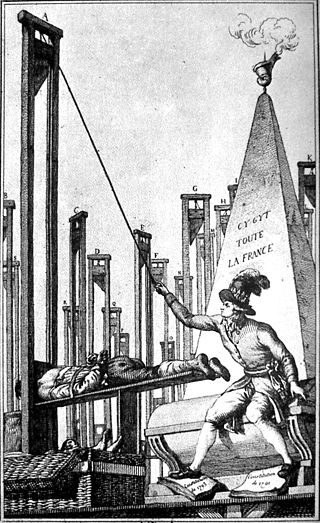
The Law of 22 Prairial, also known as the loi de la Grande Terreur, the law of the Great Terror, was enacted on 10 June 1794. It was proposed by Georges Auguste Couthon but seems to have been written by Maximilien Robespierre according to Laurent Lecointre. Using this law, the Committee of Public Safety simplified the judicial process to one of indictment and prosecution.

The Revolutionary Tribunal was a court instituted by the National Convention during the French Revolution for the trial of political offenders. In October 1793, it became one of the most powerful engines of the Reign of Terror.
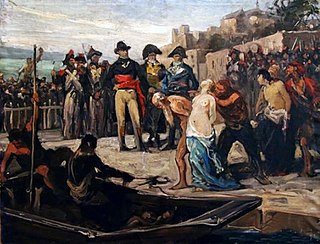
The drownings at Nantes were a series of mass executions by drowning during the Reign of Terror in Nantes, France, that occurred between November 1793 and February 1794. During this period, anyone arrested and jailed for not consistently supporting the Revolution, or suspected of being a royalist sympathizer, especially Catholic priests and nuns, was cast into the river Loire and drowned on the orders of Jean-Baptiste Carrier, the representative-on-mission in Nantes. Before the drownings ceased, as many as four thousand or more people, including innocent families with women and children, died in what Carrier himself called "the national bathtub".
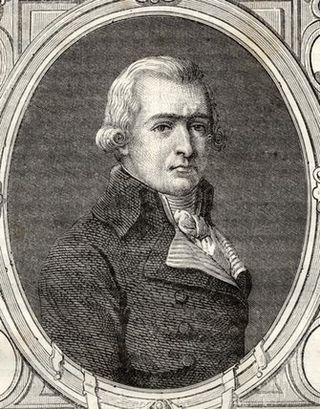
Jean-Pierre-André Amar or Jean-Baptiste-André Amar was a French political figure of the Revolution and Freemason.

Maximilien François Marie Isidore de Robespierre was a French lawyer and statesman, widely recognized as one of the most influential and controversial figures of the French Revolution. Robespierre fervently campaigned for the voting rights of all men and their unimpeded admission to the National Guard. Additionally he advocated for the right to petition, the right to bear arms in self-defence, and the abolition of the Atlantic slave trade.
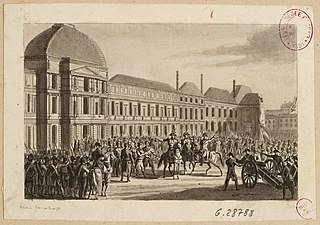
The insurrection of 31 May – 2 June 1793, during the French Revolution, started after the Paris commune demanded that 22 Girondin deputies and members of the Commission of Twelve should be brought before the Revolutionary Tribunal. Jean-Paul Marat led the attack on the representatives in the National Convention, who in January had voted against the execution of the King and since then had paralyzed the convention. It ended after thousands of armed citizens surrounded the convention to force it to deliver the deputies denounced by the Commune.The insurrection resulted in the fall of 29 Girondins and two ministers under pressure of the sans-culottes, Jacobins, and Montagnards.
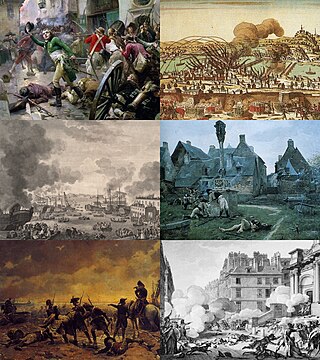
The Federalist revolts were uprisings that broke out in various parts of France in the summer of 1793, during the French Revolution. They were prompted by resentments in France's provincial cities about increasing centralisation of power in Paris, and increasing radicalisation of political authority in the hands of the Jacobins. In most of the country, the trigger for uprising was the exclusion of the Girondins from the National Convention after the Insurrection of 31 May – 2 June 1793. Although they shared common origins and political objectives, the revolts were not centrally organised or well-coordinated. The revolts were put down by the armies of the Convention over the following months. The Reign of Terror was then imposed across France to punish those associated with them and to enforce Jacobin ideology.
The revolt of Lyon against the National Convention was a counter-revolutionary movement in the city of Lyon during the time of the French Revolution. It was a revolt of moderates against the more radical National Convention, the third government during the French Revolution. It broke out in June 1793 and was put down in October of the same year, after government forces had besieged the city.

Pierre Joseph Duhem was a French physician and politician.
Jean-Antoine Courbis was a French lawyer and revolutionary.

















